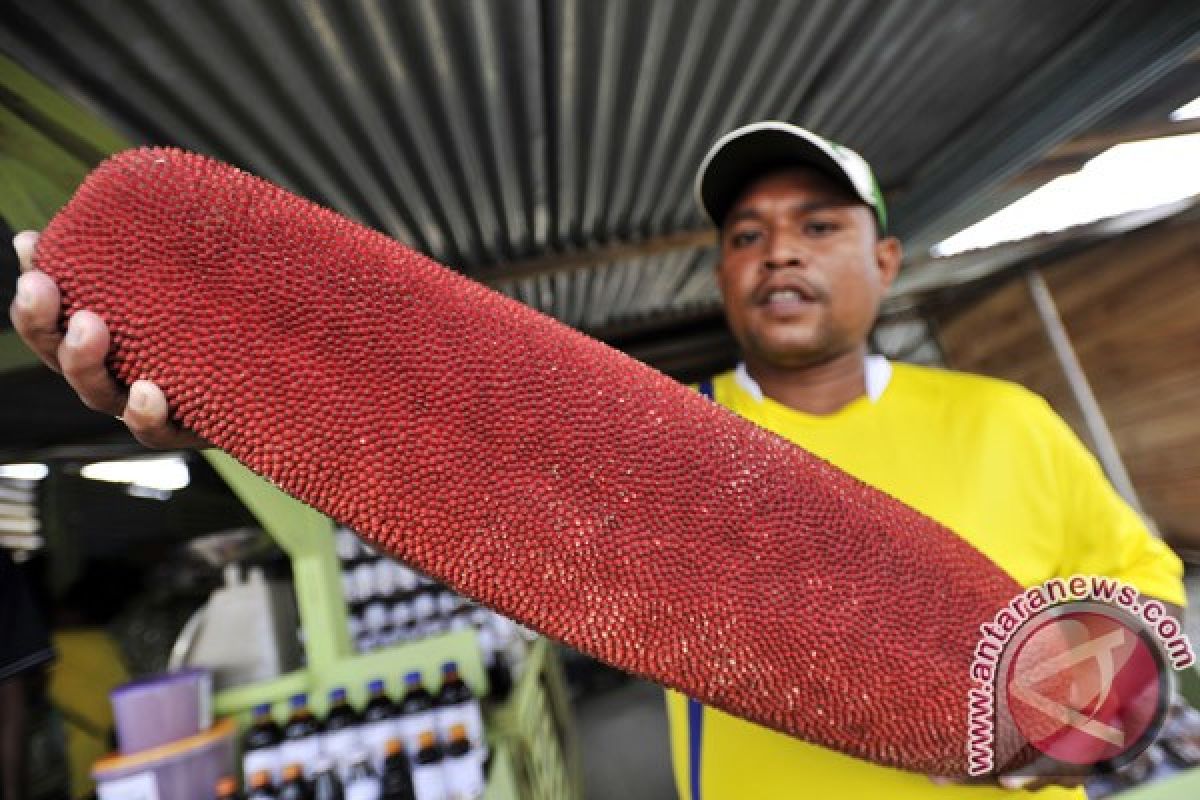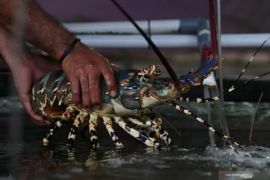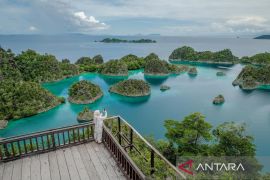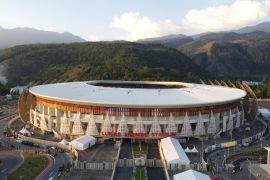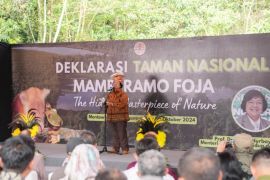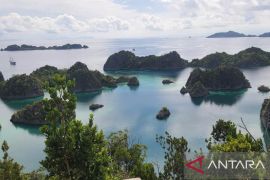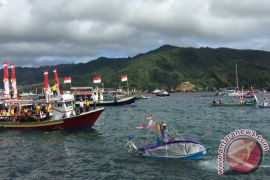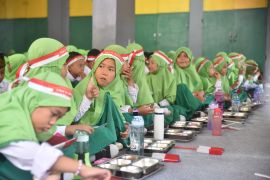Besides Red Fruit, Papua is also rich in "ant nest" medicine that has been used by the public for several years in Asia and Europe.Jakarta (ANTARA News) - The International Conference of Biodiversity in Jayapura, Papua, in September 2016 will highlight the existence of a large number of animals and plants which make up a balanced environment in the land of Papua.
Papua and West Papua are known to have abundant biodiversity which include a lot of medicinal plants that can be developed for the local peoples welfare.
The effectiveness of the medicinal plants are known for thousands of years to the Dani tribe in the Baliem Valley in Jayawijaya district, and the people of Afrak Mountain district in West Papua.
Situated in the south of the West Papua provincial city of Manokwari, the Arfak Mountain District, which gained self-autonomy from Manokwari District in 2012, has an abundance of medicinal plants whose leaves can be used to treat numerous ailments.
The Baliem Valley, located at an altitude of 1.900 meters above sea level, has medicinal plants which have proved effective to cure various kinds of diseases.
A lot of plants in the mountains of Jayawijaya district have medicinal properties and if developed properly could step up the local peoples health and welfare.
Hence, the International Conference on Biodiversity this time in Papua will more specifically discuss ecotourism and creative economy that can be undertaken by the people of Indonesia, especially in Papua.
The Papua provincial government continues to finalize the preparation for the International Conference on Biodiversity, organizing committee chairman Noak Kapisa, concurrently the head of Papua Environmental Management Agency, has stated in Jayapura.
Invitations have been prepared for presenters and stakeholders, among whom are local and foreign participants from the United States, Europe, Asia and Australia for participation in the conference.
Scientists and researchers who had studied biodiversity or culture in Papua are among some 750 foreigners and Indonesians who will participate in the conference.
Exhibitions displaying the unique biological diversity and culture of Papua will also be held coinciding with the International Conference on Biodiversity that will take place in Jayapura from September 7 to 10, 2016.
The International Conference on Biodiversity organized during the tenure of Governor Barnabas Suebu was related to general matters, but this conference will focus more on ecotourism and creative economy, according to Kapisa.
"So, the bottom line of this conference is to drive the creative economy in Papua that has to do with ecotourism and biodiversity," Kapisa remarked.
There are four basic issues, including scientific seminars and exhibitions that will be discussed in the conference, which is aimed at evaluating the potential of biodiversity and ecotourism in Papua.
"In addition, the conference is also aimed at promoting ecosystem services and culture as assets of ecotourism, as well as driving the creative economy based upon biodiversity and ecotourism to support the welfare of the indigenous people of Papua," he reiterated.
Through the conference Papua will display its advances in promoting a sustainable economy, according to him.
"The potential of biodiversity and ecosystem services in Papua is the basis for the development of increased prosperity for Papua natives," he emphasized.
Papuas potential biodiversity needs to be assessed, managed and packaged in order to be promoted through creative economic development and ecotourism to maintain the dignity and quality of life for the local people, he added.
Many of the medicinal plants are endemic and grow only in the Jayawijaya and Arfak mountain regions.
Among the medicinal plants growing in the regions are Rhododendron Macgregoriae which is effective in fighting bacteria, Myrmecodia Aureospinosa that can cure cancer and other diseases, and Pandanus Conoideus which is popularly known as Red Fruit.
The Red Fruit grows well in all Papua regions, especially in the Jayawijaya mountain area of Wamena and Tolikara, Jayapura, Manokwari, and Nabire, in addition to Timika, and Ayamaru in Sorong.
The red fruit is traditionally prepared by splitting it, wrapping it in leaves, and then cooking it in an earthen oven to produce juice, which is used as skin and eye medicine, and for worm treatment.
Based on the analysis conducted by Bogor Institute of Agriculture (IPB), Red Fruit actually contains high degrees of carotenoids and tocopherol, which is rich in Vitamin E supplements.
There are over 600 known carotenoids divided into two classes, xanthophyll which contains oxygen, and carotenes which are purely hydrocarbons and contain no oxygen.
People consuming diets rich in Carotenoids from natural foods such as fruits and vegetables are healthier and have lower mortality from a number of chronic illnesses.
The total amount of Carotenoids in a fresh Red Fruit is 34,000 ppm, and in its Red Fruit extract it is 8,600 ppm. The total amount of Tocopherol in a fresh Red Fruit is 133,000 ppm, while in its Red Fruit extract it is 17,000 ppm.
Beside Carotenoids and Tocopherol, Red Fruit extract also contains overfull fatty acids, such as Lauric, Palmitate, Stearate Acids, and non-full fatty acids, such as Palmitoleat, Oleat, Linoleate Acids, Omega-3, etc.
From the high compound ingredients of antioxidants as well as fatty acids within the Red Fruit, it was rationally understood that its extract is used as an alternative food supplement to enhance physical endurance.
The endurance is caused by the chemical ingredients from the oil of the Red Fruit such as Beta-carotene, Tocopherol, an active compound of fully fatty acids and non-fatty acids.
The antioxidants contained in the Red Fruit extract will neutralize the free radicals which is believed to cause diseases such as diabetes, hypertension, stroke, cancer, leukemia, HIV-AIDS, etc.
Red Fruit is also useful for healthy people to help step up their stamina and body endurance.
Besides containing antioxidants and antiviral compounds in high doses, Red Fruit also contains fairly complete essential vitamins and minerals.
Red Fruit is known as the traditional medicine of Papua, which has been empirically proven as an alternative medicine to cure diseases like cancer, HIV/AIDS, tumors and hypertension.
Besides Red Fruit, Papua is also rich in "ant nest" medicine that has been used by the public for several years in Asia and Europe.
Since early 2005, ant nest from Papua has been introduced to the public and to date a lot of people are still busily discussing its effectiveness to cure various diseases ranging from the mild ones such as headaches, rheumatism, nosebleeds, and ulcers, apart from gout and hemorrhoids, to severe diseases such as tumors, cancer, liver, and lung tuberculosis, in addition to kidney disorders, prostate, and coronary heart disease.
In addition, these anthill plants can enhance and accelerate the production of breast milk and restore the health of women after childbirth, increase stamina and be used as an aphrodisiac (increases sexual desire). Some even say that the content of flavonoids may control the development of herpes and HIV-AIDS.(*)
Reporter: Otniel Tamindael
Editor: Heru Purwanto
Copyright © ANTARA 2016
